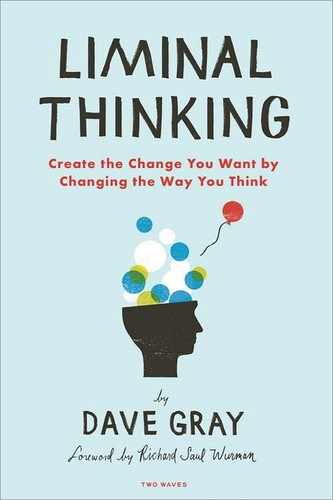PRACTICE
7
Act As If in the Here and Now
Action may not always bring happiness, but there is no happiness without action.
—William James
Jason Roberts was an IT consultant living in Dallas. He got back to Dallas after visiting Europe, and he said to himself, “Everywhere I went in Europe they have these big beautiful plazas with pigeons and street vendors and all these wonderful things. Why don’t we have that in Dallas? Why don’t we have that in my neighborhood? Why do we just have giant freeway ramps and big empty spaces?”
If he hadn’t been a change agent, he might have left it at that.
But he thought, I want to see what I saw in Europe, but I want to see it happening here, in my hometown. I want more of that feeling.
The first thing he did was go to the city council to see what the laws were. And he found that there were all kinds of arcane rules that made it very difficult to do anything. For example, you had to pay a thousand dollars for a license if you wanted to have outdoor tables. That looks like an obstacle, right? Most people would see it that way.
But he just said, we’re going to get a group of people together, friends, and we’re going to set up a kind of temporary neighborhood design, and we’re going to break as many of these rules as we possibly can, and then we’re going to invite the city council down and we’re going to show them what could happen, and then we’re going to ask them, “Why do we have all these rules?”
And that’s exactly what they did. They kind of swarmed over a neighborhood and got everyone involved, and they made a vacant lot into a park, and they narrowed the street and widened the walking space by blocking off a couple of street lanes with big planters, and they made a sidewalk café. They painted a crosswalk on the street. It was a completely guerilla pop-up urban scenario.
There was a conflict between the rules and what they wanted to see happening. So, they just surfaced the conflict and made it very visible, by acting as if those obstacles didn’t exist. They created, in a temporary way, a possible, parallel world, a prototype of a potential city, one that was unconstrained by the existing rules.
They invited the city council members to see what they had done, and they asked the question, “Why do we have all these rules?”
And the city council people said, “We actually don’t know why all these rules exist. Some of them are hundreds of years old, and we can change them. We don’t need them.”
The constraints were imaginary. They were just old rules, and nobody even knew why they were there.
This is the secret of challenging existing beliefs. If you can form a hypothesis, you don’t have to necessarily believe it’s true in order to test it. You can simply act as if it were true and see what happens.
Let’s go back to the learning loop for a second. This is the typical way we learn about the world and improve our beliefs and behavior over time.
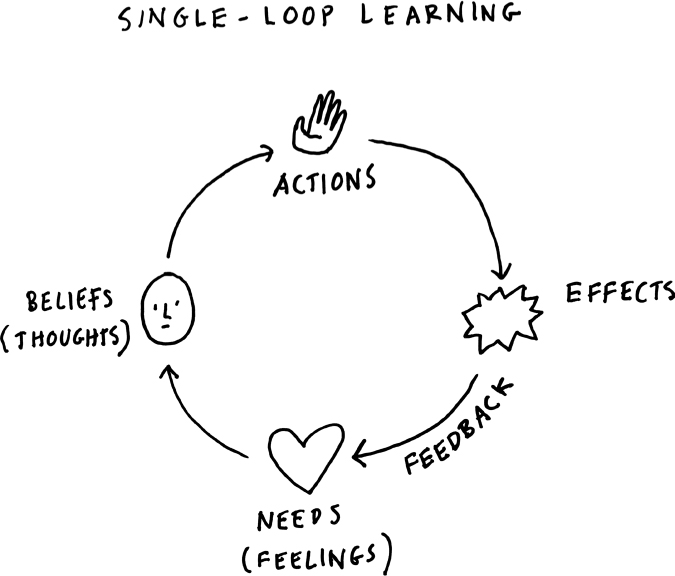
The single loop works in most circumstances, because you are building on your existing experiences, refining, honing, and polishing your existing, mostly successful beliefs.
But there are times when a belief no longer works, or it isn’t enough. You are stuck, and getting unstuck feels like it’s unlikely or impossible. You need a new approach.
That’s when you need double-loop learning.
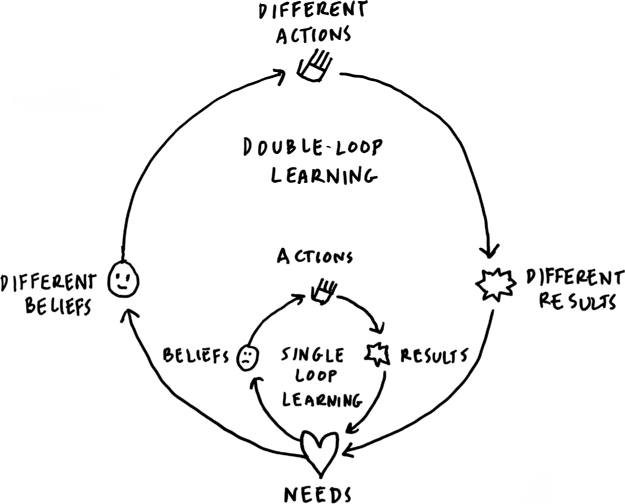
Double-loop learning is a way to break out of a rut by challenging your own beliefs and trying on new ones. You can even test beliefs that you think are wrong—and you should.
It’s a bit like Zen Buddhism. A Zen Buddhist will tell you, “You don’t have to believe anything in particular to reach enlightenment. You just have to sit.”
In the case of double-loop learning, you don’t have to believe a hypothesis in order to test it. All you have to do is act as if it were true and see what happens. Ask yourself, “How would I act if I believed this were true?”
Change is only possible in the here-and-now, and the way to create change is by acting in the here-and-now as if a different world existed. For example, act as if the world you want to create is already here.
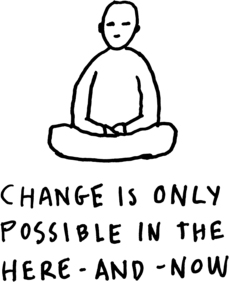
Here’s how to practice double-loop learning:
First, recognize that, although you may not be able to see it, you are operating in a bubble of belief, a reality distortion field.
Don’t just observe behavior. Try to figure out the underlying needs and beliefs that are operating in any situation you want to change.
Are you seeing the results that you want? If so, great!
If not, explore and examine as many alternative beliefs as you can. Expose yourself—or your team—to more ideas and experiences. Search for a belief that looks interesting and act as if it were true for a period of time.
See what happens. Did you improve the situation? If so, great! If not, repeat as necessary.
There are worlds of possibility all around you—many possible ways to operate, many possible beliefs. With each set of beliefs comes a new set of possibilities. You won’t know what the range of those possibilities look like until you begin to explore them.
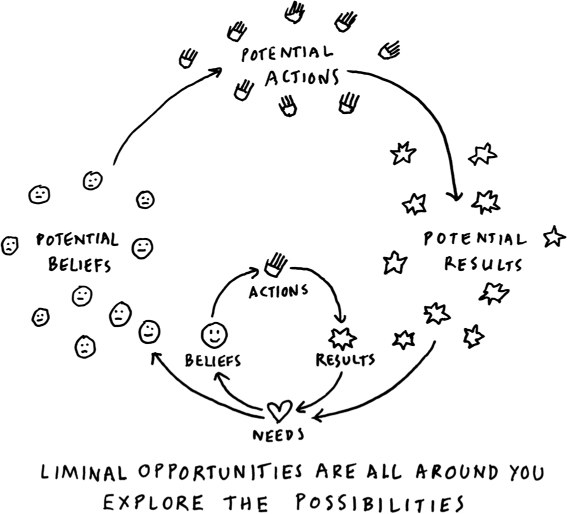
Double-loop learning is a powerful tool because it gives you a way to test new ideas that you would otherwise ignore or discount, because they are coming from outside your existing bubble. You don’t have to actually believe something is true in order to test it. All you have to do is act as if it were true and see what happens.
PRINCIPLE 7
Act as-if in the here-and-now.
You can test beliefs even if you don’t believe they are true. All you need to do is act as if they were true and see what happens. If you find something that works, do more of it.
